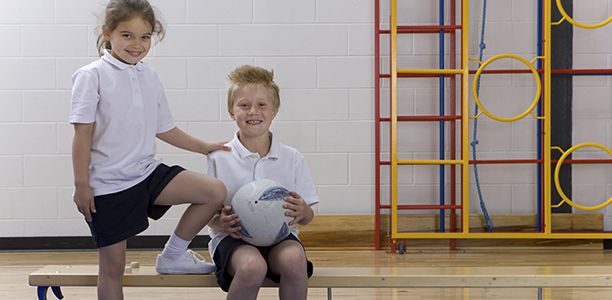James Cook University researchers have found lengthening school uniforms would give students much greater protection from skin cancer.
The study shows lengthening school shorts, skirts and sleeves just a small amount or choosing loose-fitting garments to cover more skin could significantly reduce the risk of skin cancer.
A study led by doctoral student Denise Turner and her supervisor Dr Simone Harrison, Director and Principal Research Fellow at JCU’s Skin Cancer Research Unit, looked at more than 100 schools in Townsville, Cairns and Atherton.
“The majority of school pupils in this high risk region for skin cancer wore school uniforms that only covered a small proportion of the upper arm and thighs. Our study found that by lengthening the average covering to the knees and elbows we could increase sun protection by just over 9%,” said Dr Harrison.
“It doesn’t require a re-design of the uniform, just small alterations or choosing loose-fitting garments, so it’s a big gain for a little effort.”
The study found wide variations in how standard school uniforms protected children from the sun, with pupils from smaller, rural and educationally disadvantaged schools generally having less protective school clothing.
It also found the uniforms of Cancer Council Queensland SunSmart accredited schools and the uniforms of schools not enrolled in the program provided equal amounts of protection.
Dr Harrison said there is an opportunity to make changes to the Australian and New Zealand Standard for assessing sun protective clothing, which is currently under review.
“The labelling system for sun protective clothing would be more informative for consumers if it took into account the body surface covered by the garment as well as the UPF of the fabric.”
An experiment with outdoor workers in north Queensland by another JCU researcher, Wade Sinclair, found their body core and skin temperature was similar whether they wore long or short pants. Children in an earlier study in north Queensland, led by Dr Harrison, also reported no significant discomfort in longer loose-fitting clothes.
Cancer Council Queensland spokesperson Katie Clift said the research was encouraging.
“This study shows even small alterations to school uniforms can make a big difference in reducing the risk of skin cancer in Queensland children,” Ms Clift said.
“Children spend most of their week in a school environment during peak UV times, and we need to ensure they have the best protection against skin damage and skin cancer.
“Cancer Council welcomes any improvements that schools may wish to make to their uniforms to better protect their students.”
Dr Harrison is trialing a comprehensive sun protection program intervention program in Townsville schools. She hopes JCU and Cancer Council Queensland will join forces to further strengthen the SunSmart schools programme through their work on hat wearing, sun safe policies and shade.
Magnetic Island State School has re-designed its uniforms for next year based on Dr Harrison’s research. Photos are available of the new sun-safe uniform. Magnetic Island State School P&C, Mrs Kath Smith, can be contacted on 0427 954 430.
- Queensland has the highest rates of skin cancer in the world. Around 3,000 melanoma and 133,000 non-melanoma skin cancers are diagnosed across the state each year.
- Around 99% of all skin cancer cases are caused by exposure to UV radiation.
- The numbers of pigmented moles a person develops is a major risk factor for melanoma, the most deadly form of skin cancer.
- Mole development is related to sun exposure in genetically susceptible people.
(Source: James Cook University)










